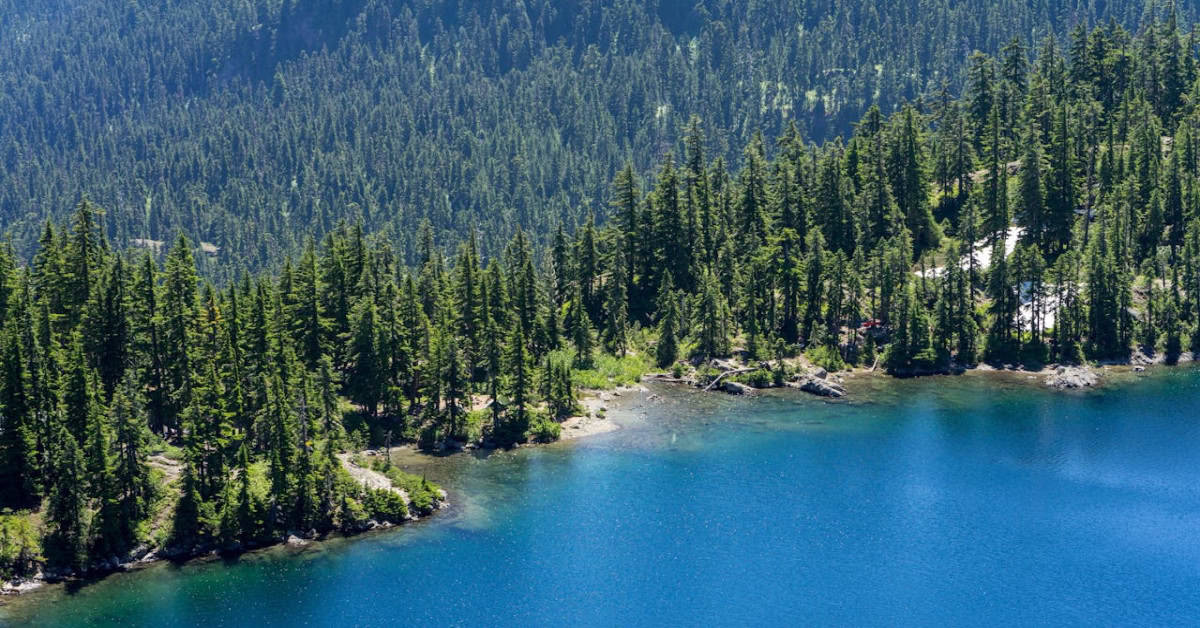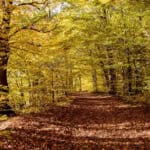Evergreen forests are home to a vast array of trees that keep their leaves year-round. The diversity of evergreen forest trees includes both conifers and broadleaf species.
These trees play a vital role in maintaining the balance of our ecosystems. Exploring the diversity of evergreen forest trees helps us understand their unique characteristics and contributions.
These trees provide habitats for countless species and are crucial for carbon sequestration. They also enhance soil stability and water regulation.
The purpose of this blog post is to explore the variety of evergreen forest trees. We aim to highlight their importance and the need to protect these vital ecosystems.
Evergreen Forests
Evergreen forests are areas where trees retain their leaves throughout the year. These forests are known for their dense canopies and rich biodiversity. Unlike deciduous forests, evergreen forests remain lush and green even in winter.
Characteristics of evergreen forests include:
- Trees keep their leaves year-round.
- Dense canopies block much of the sunlight.
- High levels of biodiversity with many plant and animal species.
- Stable temperature and humidity levels.
- Soils are often acidic and rich in organic matter.
- Found in both tropical and temperate regions.
- Essential for carbon sequestration and climate regulation.
These characteristics make evergreen forests unique and vital for the planet’s health.
Types of Evergreen Forest Trees
Evergreen forest trees come in various types, each adapted to different climates. Coniferous trees, like pines, spruces, and firs, have needle-like leaves. Broadleaf evergreens, such as holly, live oak, and eucalyptus, have wider leaves that stay green year-round.
These trees provide critical habitats and maintain ecological balance, ensuring forests remain lush and vibrant throughout the seasons.
Coniferous Trees
Coniferous trees are a type of evergreen tree that have needle-like leaves and produce cones. They are well-adapted to cold climates and poor soil conditions, making them a common sight in boreal forests.
Pine Tree
Eastern White Pine: Known for its tall, straight trunk and soft, flexible needles. It is often used in construction and furniture making.
Ponderosa Pine: Recognizable by its thick, orange-brown bark and long, sturdy needles. It is a dominant species in western North American forests.

Spruce
Norway Spruce: A fast-growing tree with sharp, stiff needles. It is commonly used as a Christmas tree and in timber production.
Sitka Spruce: Noted for its large size and strong, lightweight wood, making it valuable for aircraft construction and musical instruments.
Fir
Douglas Fir: Distinguished by its thick, rough bark and soft, flat needles. It is one of the most important timber trees in North America.
Balsam Fir: Known for its fragrant, dark green needles and symmetrical shape. It is popular as a Christmas tree.
Cedar
Western Red Cedar: Famous for its aromatic wood and resistance to decay, making it ideal for outdoor furniture and construction.
Eastern Red Cedar: Recognized for its reddish wood and scale-like leaves. It is often used for cedar chests and fence posts.
Hemlock
Western Hemlock: A large tree with drooping branches and soft, flat needles. It is important for the timber industry in the Pacific Northwest.
Eastern Hemlock: Known for its graceful, arching branches and fine, feathery foliage. It is used for ornamental purposes and in landscaping.
Larch
European Larch: A deciduous conifer with bright green needles that turn golden in fall. It is valued for its durable wood.
Japanese Larch: Similar to the European larch, with slightly shorter needles. It is often planted for timber and ornamental purposes.

Cypress
Bald Cypress: Found in wetlands, it is known for its “knees” that protrude from the water. Its wood is rot-resistant.
Monterey Cypress: Recognized by its twisted, windswept appearance. It is native to the California coast and used for ornamental planting.
Also Read: Exploring the Biodiversity of Tropical Evergreen Forest Animals
Broadleaf Evergreen Trees
Broadleaf evergreen trees have broad, flat leaves that remain green throughout the year. These trees are found in various climates, from temperate regions to tropical areas. They play a crucial role in maintaining biodiversity and providing habitats for many species.
Holly
American Holly: This tree has glossy, dark green leaves with sharp spines. It produces bright red berries, popular during the holiday season.
English Holly: Known for its dense, dark foliage and vibrant red berries. It is often used in ornamental landscaping and holiday decorations.
Eucalyptus
Blue Gum: Recognizable by its smooth bark and blue-green leaves. It grows rapidly and is used for timber and essential oils.
River Red Gum: Known for its mottled bark and long, lance-shaped leaves. It is often found near waterways in Australia.

Live Oak
Southern Live Oak: A large tree with sprawling branches and thick, leathery leaves. It is common in the southeastern United States.
Coast Live Oak: This tree has dark green, oval leaves and grows along the California coast. It provides excellent shade and habitat.
Magnolia
Southern Magnolia: Famous for its large, fragrant white flowers and glossy leaves. It is a popular ornamental tree in the southern United States.
Sweetbay Magnolia: This tree has fragrant, creamy white flowers and can tolerate wet soils. It is often used in landscaping.
Bay Laurel
California Bay Laurel: This tree has aromatic, dark green leaves used in cooking. It is native to the western United States.
Grecian Laurel: Known for its smooth, aromatic leaves used in cooking and herbal medicine. It is often grown as an ornamental shrub.
Olive Tree
European Olive: A small tree with silver-green leaves and small, bitter fruits. It is widely cultivated for its olives and oil.
Russian Olive: Known for its silvery leaves and yellow flowers. It is hardy and often used for windbreaks and erosion control.

Camellia
Camellia Japonica: A popular ornamental plant with large, showy flowers in various colours. It blooms in late winter to early spring.
Camellia Sasanqua: This tree has smaller, fragrant flowers and blooms in the fall. It is used in hedges and as a ground cover.
Common Evergreen Forest Trees: Identification Guide
Identifying common evergreen forest trees involves looking at their unique features, such as leaves, bark, and overall shape. Here are some tips for recognizing these trees in the wild:
Pine Trees
Leaves: Long, slender needles in bundles of 2-5.
Bark: Thick and scaly, often reddish-brown.
Shape: Tall and conical with upward-facing branches.
Spruce Trees
Leaves: Sharp, stiff needles attached singly.
Bark: Thin and flaky, greyish-brown.
Shape: Pyramidal with branches that droop slightly.
Fir Trees
Leaves: Soft, flat needles, usually blunt-tipped.
Bark: Smooth with resin blisters when young, becomes rough with age.
Shape: Narrow, upright with dense foliage.
Cedar Trees
Leaves: Scale-like, overlapping leaves that are aromatic.
Bark: Fibrous, reddish-brown, and peels easily.
Shape: Spreading branches with a rounded crown.
Holly Trees
Leaves: Glossy, dark green with spiny edges.
Bark: Smooth and grey, becoming rough with age.
Shape: Dense and rounded with red berries.
Magnolia Trees
Leaves: Large, thick, and leathery with a glossy surface.
Bark: Smooth and greyish-brown.
Shape: Broad and spreading with large, fragrant flowers.
Eucalyptus Trees
Leaves: Long, narrow, and aromatic with a blue-grey hue.
Bark: Smooth and sheds in strips, revealing a multi-colored surface.
Shape: Tall with an open, irregular canopy.
These characteristics help in identifying evergreen trees and understanding their roles in forest ecosystems.
Adaptations of Tropical Evergreen Trees
Evergreen trees have developed unique adaptations to survive in diverse climates and environmental conditions. In colder regions, their needle-like leaves reduce water loss and withstand freezing temperatures.
In warmer climates, broadleaf evergreens have waxy, thick leaves to minimize water evaporation.
Deep root systems allow them to access water from deep underground sources, making them resilient during droughts. These adaptations help evergreen trees thrive where other plants might struggle.
These adaptations benefit both the trees and the surrounding ecosystem. Evergreen trees provide year-round shelter and food for wildlife. Their consistent foliage contributes to carbon sequestration, helping mitigate climate change.
Additionally, they prevent soil erosion and maintain soil fertility by retaining leaf litter and organic matter. These roles make evergreen trees essential for ecological stability and health.
Geographic Distribution of Evergreen Forests
Evergreen forests are found in various regions across the globe, adapting to a wide range of climates. In the Northern Hemisphere, boreal forests, also known as taiga, cover vast areas of Canada, Alaska, Russia, and Scandinavia.
These forests are dominated by coniferous trees, such as pines, spruces, and firs, which thrive in cold, harsh conditions.
In warmer climates, evergreen forests appear in Mediterranean regions and tropical rainforests. The Mediterranean regions, including parts of southern Europe, North Africa, and California, are home to broadleaf evergreen trees like olive and bay laurel.
Tropical rainforests, found in the Amazon Basin, Central Africa, and Southeast Asia, boast a rich diversity of evergreen species, including eucalyptus, magnolia, and various types of palm trees. These forests are crucial for biodiversity and ecological balance.
Ecological Roles of Evergreen Trees
Evergreen trees play crucial roles in maintaining ecological balance. They provide year-round habitats and food for countless species, boosting biodiversity. These trees are especially important in regions with harsh climates, offering shelter and stability for wildlife.
Their dense foliage and continuous leaf cover create unique microhabitats, supporting a wide range of plants, insects, and animals.
In addition to enhancing biodiversity, evergreen trees are vital for carbon sequestration. They absorb carbon dioxide through photosynthesis, helping to mitigate climate change. Their roots help regulate water by maintaining soil moisture and preventing erosion.
Evergreen trees also improve soil health by adding organic matter through their fallen leaves and needles, promoting nutrient cycling and soil fertility.
Conservation of Evergreen Forests
Evergreen forests face several significant threats, including deforestation and climate change. Deforestation, driven by logging, agriculture, and urban development, results in habitat loss and fragmentation. This reduces biodiversity and disrupts ecosystems.
Climate change exacerbates these issues by altering temperature and precipitation patterns, which can stress evergreen trees and make them more susceptible to pests and diseases.
Conservation efforts focus on protecting these vital ecosystems through various strategies. Establishing protected areas and national parks helps preserve large tracts of evergreen forests.
Sustainable forestry practices, such as selective logging and reforestation, aim to minimize environmental impact. Additionally, policies to reduce carbon emissions and combat climate change are crucial.
Community involvement and education also play essential roles in conservation by promoting awareness and stewardship of evergreen forests.
Conclusion
The diversity of evergreen forest trees is vast and crucial for maintaining healthy ecosystems. These trees provide year-round habitats, enhance biodiversity, and play vital roles in carbon sequestration and soil conservation.
Protecting these forests is essential to preserve their ecological benefits and mitigate climate change. We must support conservation efforts, adopt sustainable practices, and promote awareness of their importance.
By working together, we can ensure that these vital ecosystems thrive for future generations








